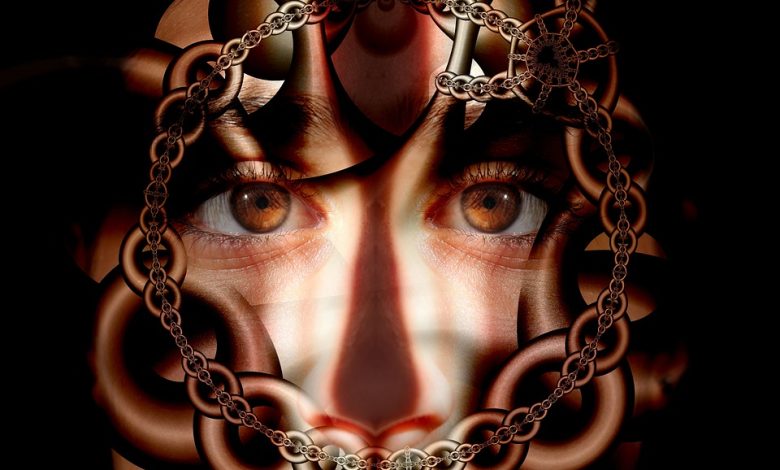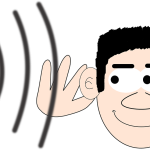20 Drugs That Cause Hallucinations

Hallucinations are a type of sensory experience that occurs in the absence of external stimuli. They can be caused by various factors, including drug use. The prevalence of drug-induced hallucinations varies depending on the specific drug and population being studied. However, drug-induced hallucinations are relatively common, particularly among individuals who misuse drugs or take medications that have psychoactive effects.
According to a study published in the Journal of Clinical Psychiatry, the prevalence of drug-induced hallucinations in patients with psychiatric disorders is estimated to be around 5%. However, this number is likely an underestimation, as many individuals may not report or recognize their hallucinations as a medication side effect.
Additionally, drug-induced hallucinations can occur in individuals who do not have a pre-existing psychiatric condition. For example, a study published in the Journal of Psychopharmacology found that 9% of individuals who used synthetic cannabinoids experienced hallucinations as a side effect. In this article, we shall be taking a broad look at the most common drugs that cause hallucinations and their symptoms.
List of Most The Common Drugs That Cause Hallucinations
There are many drugs that can cause hallucinations, ranging from prescription medications to illicit drugs. In this article, we will discuss the most common drugs that cause hallucinations.
1. LSD
LSD, also known as acid, is a powerful hallucinogenic drug. It is made from lysergic acid, which is found in a type of fungus that grows on rye and other grains. LSD is usually taken in the form of small squares of paper that have been soaked in the drug. The effects of LSD can last for up to 12 hours and can include vivid visual hallucinations, as well as changes in mood and perception.
2. Psilocybin
Psilocybin is a naturally occurring hallucinogen found in certain types of mushrooms. When ingested, psilocybin is converted into psilocin, which is the compound that causes hallucinations. The effects of psilocybin can last for up to 6 hours and can include visual and auditory hallucinations, as well as changes in mood and perception.
3. DMT
DMT, or dimethyltryptamine, is a powerful hallucinogenic drug that is found in certain types of plants. It is usually smoked or injected, and the effects can last for up to 30 minutes. DMT can cause intense visual and auditory hallucinations, as well as changes in mood and perception.
4. Ketamine
Ketamine is a dissociative anesthetic that is used for surgical procedures and pain management. It is also sometimes used recreationally as a hallucinogenic drug. The effects of ketamine can last for up to an hour and can include vivid visual and auditory hallucinations, as well as changes in mood and perception.
5. PCP
PCP, or phencyclidine, is a powerful dissociative drug that is often used recreationally. The effects of PCP can last for up to 24 hours and can include vivid visual and auditory hallucinations, as well as changes in mood and perception. PCP is also known for causing aggressive behavior and delusional thinking.
6. MDMA
MDMA, or ecstasy, is a stimulant drug that is often used recreationally. It can cause feelings of euphoria, as well as changes in mood and perception. MDMA can also cause visual and auditory hallucinations, particularly at higher doses.
7. Cannabis
Cannabis, also known as marijuana, is a commonly used recreational drug that can cause mild hallucinations in some users. The effects of cannabis can last for up to 3 hours and can include changes in mood and perception, as well as mild visual and auditory hallucinations.
8. Anticholinergics
Anticholinergics are a class of drugs that are used to treat various conditions, including Parkinson’s disease, irritable bowel syndrome, and overactive bladder. These drugs can cause hallucinations as a side effect, particularly in elderly patients. Anticholinergics can also cause confusion and delirium.
One example of an anticholinergic drug that can cause hallucinations is diphenhydramine, which is commonly used as an over-the-counter sleep aid and allergy medication. Diphenhydramine works by blocking histamine receptors and also has anticholinergic properties, which can lead to side effects such as dry mouth, blurred vision, and confusion. In some cases, diphenhydramine can also cause hallucinations, particularly in higher doses or in individuals who are sensitive to its effects.
Another example of an anticholinergic drug that can cause hallucinations is scopolamine, which is used to prevent motion sickness and nausea. Scopolamine works by blocking muscarinic receptors in the brain and can cause side effects such as dry mouth, blurred vision, and drowsiness. In some cases, scopolamine can also cause hallucinations, particularly in higher doses or in individuals who are sensitive to its effects.
9. Antidepressants
Some types of antidepressants, particularly tricyclic antidepressants, can cause hallucinations as a side effect. This is more likely to occur at higher doses or in elderly patients. Antidepressants can also cause other types of cognitive impairment, such as confusion and memory loss.
One example of an antidepressant that can cause hallucinations is bupropion (brand name Wellbutrin). Bupropion is a type of antidepressant known as a dopamine reuptake inhibitor, which works by increasing levels of the neurotransmitter dopamine in the brain. While hallucinations are a rare side effect of bupropion, they can occur, especially at higher doses or in individuals with a history of hallucinations.
Another antidepressant that has been associated with hallucinations is trazodone (brand name Oleptro). Trazodone is a type of antidepressant known as a serotonin antagonist and reuptake inhibitor, which works by increasing levels of the neurotransmitter serotonin in the brain. While hallucinations are a rare side effect of trazodone, they have been reported in some individuals taking this medication.
10. Antipsychotics
Antipsychotic drugs are used to treat psychotic disorders, such as schizophrenia and bipolar disorder. These drugs can cause hallucinations as a side effect, particularly at higher doses. Antipsychotics can also cause other types of cognitive impairment, such as sedation.
One example of an antipsychotic drug that can cause hallucinations is clozapine (brand name Clozaril). Clozapine is a second-generation antipsychotic drug that is used to treat schizophrenia and other psychotic disorders. While clozapine is effective in treating these conditions, it can cause a rare side effect known as clozapine-induced hallucinations. These hallucinations can include visual and auditory hallucinations and are more likely to occur in individuals with a history of hallucinations or other psychiatric disorders.
Another antipsychotic drug that has been associated with hallucinations is quetiapine (brand name Seroquel). Quetiapine is a second-generation antipsychotic drug that is used to treat schizophrenia, bipolar disorder, and other psychotic disorders. While hallucinations are a rare side effect of quetiapine, they have been reported in some individuals taking this medication.
11. Benzodiazepines
Benzodiazepines are a class of drugs that are used to treat anxiety and sleep disorders. These drugs can cause hallucinations as a side effect, particularly at higher doses or in patients with a history of substance abuse. Benzodiazepines can also cause confusion and memory impairment.
One example of a benzodiazepine that can cause hallucinations is triazolam (brand name Halcion). Triazolam is a short-acting benzodiazepine that is used to treat insomnia. While hallucinations are a rare side effect of triazolam, they can occur, especially at higher doses or in individuals with a history of hallucinations.
Another benzodiazepine that has been associated with hallucinations is lorazepam (brand name Ativan). Lorazepam is a longer-acting benzodiazepine that is used to treat anxiety, insomnia, and other conditions. While hallucinations are a rare side effect of lorazepam, they have been reported in some individuals taking this medication.
12. Deliriant drugs
Deliriant drugs, such as diphenhydramine are used for various purposes, including allergy relief and motion sickness. These drugs can cause hallucinations as a side effect, particularly at higher doses. Deliriant drugs can also cause confusion, memory impairment, and delirium.
13. Opioids
Opioids are a class of drugs that are used to treat pain. These drugs can cause hallucinations as a side effect, particularly at higher doses. Opioids can also cause sedation and respiratory depression.
One example of an opioid that can cause hallucinations is tramadol, which is a synthetic opioid that is used to treat moderate to severe pain. Tramadol works by binding to mu-opioid receptors in the brain and spinal cord, and also has effects on other neurotransmitters such as serotonin and norepinephrine. While tramadol is generally considered to be less potent than other opioids such as morphine, it can still cause hallucinations as a side effect, particularly in higher doses or in individuals who are sensitive to its effects.
Another example of an opioid that can cause hallucinations is fentanyl, which is a potent synthetic opioid that is used for the management of severe pain. Fentanyl is similar in structure to other opioids such as morphine and heroin, but is much more potent, with a much higher risk of overdose. While hallucinations are not a common side effect of fentanyl, they can occur in some individuals, particularly at high doses.
14. Stimulants
Stimulants, such as amphetamines and cocaine, are used recreationally for their euphoric effects. These drugs can cause hallucinations as a side effect, particularly at higher doses. Stimulants can also cause agitation, anxiety, and paranoia.
15. Inhalants
Inhalants, such as gasoline and paint thinner, are used recreationally for their hallucinogenic effects. These drugs can cause hallucinations as a side effect, as well as other types of cognitive impairment, such as confusion and memory loss. Inhalant abuse can also cause damage to the brain and other organs.
16. Synthetic cannabinoids
Synthetic cannabinoids, also known as spice or K2, are synthetic versions of marijuana. These drugs can cause hallucinations as a side effect, as well as other types of cognitive impairment. Synthetic cannabinoids can also cause other health problems, such as seizures and kidney damage.
17. Alcohol
Alcohol is a commonly used recreational drug that can cause mild hallucinations in some users. The effects of alcohol can last for up to 6 hours and can include changes in mood and perception, as well as mild visual and auditory hallucinations. Alcohol abuse can also cause damage to the brain and other organs.
18. Steroids
Steroids, such as prednisone and dexamethasone, are used to treat various conditions, including inflammation and autoimmune disorders. These drugs can cause hallucinations as a side effect, particularly at higher doses. Steroids can also cause other types of cognitive impairment, such as confusion and memory loss.
19. Anticonvulsants
Some types of anticonvulsants, such as phenytoin and carbamazepine, can cause hallucinations as a side effect. This is more likely to occur at higher doses or in patients with a history of substance abuse. Anticonvulsants can also cause other types of cognitive impairment, such as confusion and memory loss.
One example of an anticonvulsant drug that can cause hallucinations is gabapentin, which is used to treat epilepsy, neuropathic pain, and restless leg syndrome. Gabapentin works by binding to calcium channels in the brain and spinal cord, which helps to decrease the release of neurotransmitters involved in seizures and pain. While gabapentin is generally well-tolerated, it can cause side effects such as drowsiness, dizziness, and confusion. In some cases, gabapentin can also cause hallucinations, particularly in higher doses or in individuals who are sensitive to its effects.
Another example of an anticonvulsant drug that can cause hallucinations is topiramate, which is used to prevent seizures and to treat migraine headaches. Topiramate works by blocking sodium channels in the brain and enhancing the activity of the neurotransmitter GABA. While topiramate is generally well-tolerated, it can cause side effects such as drowsiness, dizziness, and cognitive impairment. In some cases, topiramate can also cause hallucinations, particularly in higher doses or in individuals who are sensitive to its effects.
20. Antibiotics
Some types of antibiotics, such as clarithromycin and metronidazole, can cause hallucinations as a side effect. This is more likely to occur at higher doses or in patients with a history of substance abuse. Antibiotics can also cause other types of cognitive impairment, such as confusion and memory loss.
Conclusion
In conclusion, there are many drugs that can cause hallucinations as a side effect, ranging from prescription medications to illicit drugs. It is important to be aware of the potential side effects of any drugs you are taking and to discuss any concerns with your healthcare provider. If you experience hallucinations or other unusual symptoms while taking a medication, seek medical attention immediately.





